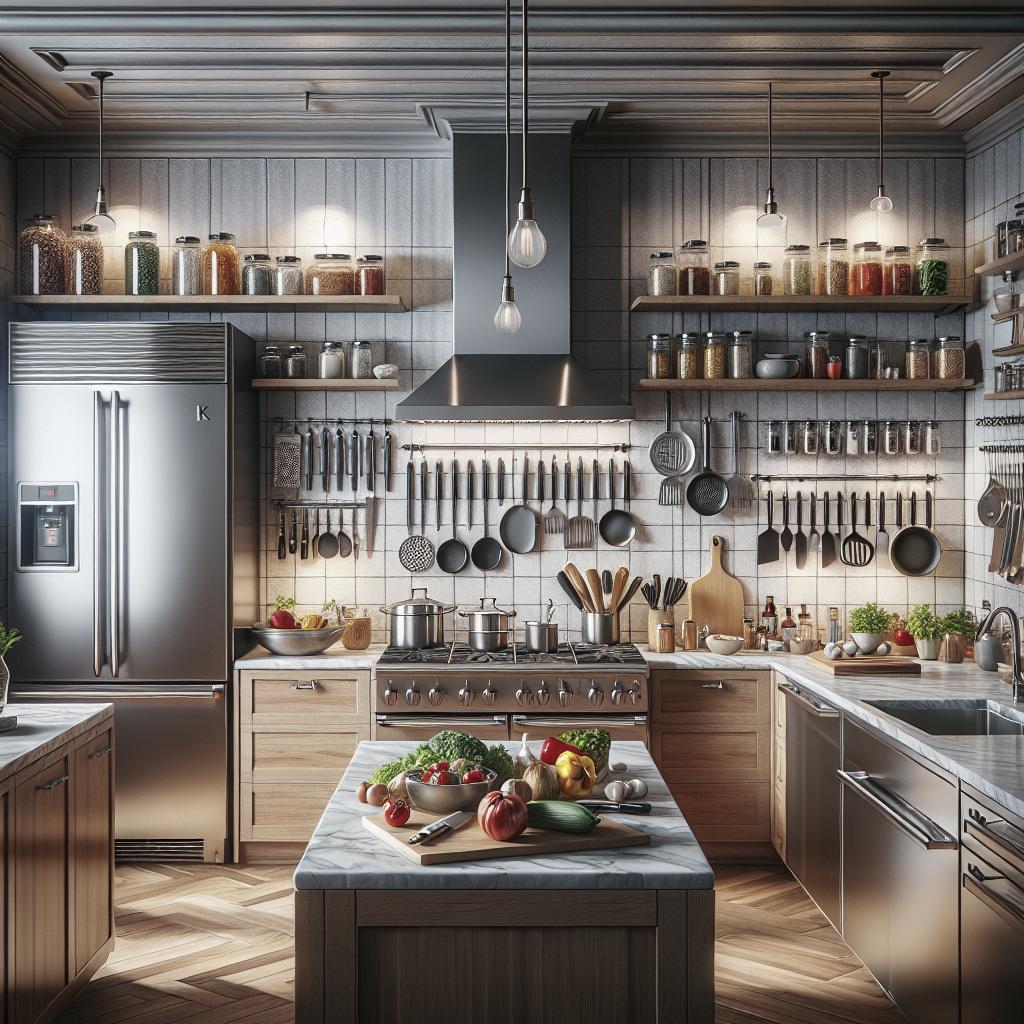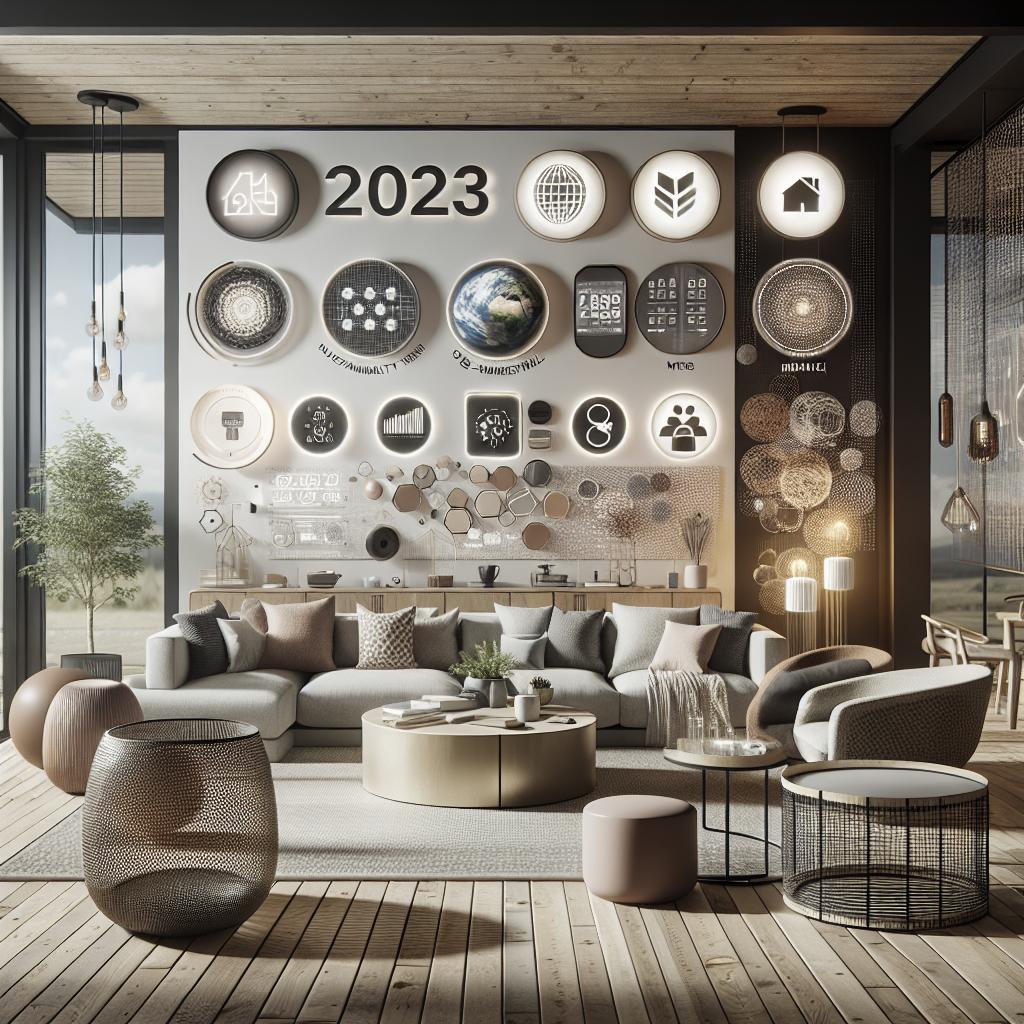Essentials for a Functional Kitchen
The kitchen is often referred to as the heart of the home, a space where families gather and culinary creativity takes shape. Creating a functional kitchen involves more than just an aesthetically pleasing design; it requires thoughtful planning and attention to detail. This post explores ten essential elements that ensure your kitchen not only looks beautiful but also meets your practical needs. From strategizing your layout and optimizing storage to integrating smart technology and personalizing your space, every aspect plays a crucial role in achieving a perfect balance between form and functionality. Whether you’re starting from scratch or planning a remodel, these insights will guide you in creating a kitchen that is both efficient and inviting.
Plan the Layout
The initial step in crafting a functional kitchen space is meticulous layout planning. The layout you choose acts as the foundation, affecting every element from movement flow to accessibility. Common layout styles include the L-shaped, U-shaped, or galley kitchen, each serving different needs and space configurations. Understanding how these layouts work with your available space can significantly enhance your kitchen’s functionality.
Consider the ergonomics of your layout. Aim to minimize excessive movement by placing commonly used appliances and work areas near each other. This not only makes cooking more efficient but also reduces fatigue, ensuring that meal preparation remains a pleasure rather than a chore.
Consider the Work Triangle
The concept of the kitchen work triangle remains a cornerstone of kitchen design. This design principle connects the three main work areas: the refrigerator, stove, and sink, aiming to minimize the steps between them. Ideally, each leg of the triangle should be between four and nine feet, creating a convenient and comfortable working area.
In modern homes, while open-plan spaces may alter the traditional triangle slightly, its core tenets continue to enhance workflow efficiency. Adapting the triangle to suit your individual habits is critical, ensuring the kitchen serves your unique culinary style efficiently.
Include Plenty of Storage
An abundance of storage options is a key element of any functional kitchen. From pots and pans to pantry essentials, ensuring everything has its place is essential for maintaining order. Consider incorporating a mix of deep drawers, tall cabinets, and pantry solutions to accommodate a variety of items.
Innovative storage options, like pull-out baskets and rotating shelves, can maximize space in even the smallest of kitchens. Tailoring your storage to fit specific needs helps prevent clutter and fosters an environment where creating culinary delights becomes seamless.
Optimize Cabinet Space
Cabinet space is often underestimated. However, optimizing this aspect can drastically improve your kitchen’s functionality. Utilize vertical space effectively by installing taller cabinets or using stackable shelves and organizers. This approach stores more without overcrowding countertops.
Consider incorporating adjustable shelving and custom inserts to accommodate various sizes and shapes of kitchenware. This flexibility ensures that even frequently used items are easily accessible, reducing time spent searching through cluttered cabinets.
Choose Quality Materials
Investing in quality materials not only elevates the aesthetics of your kitchen but also enhances its longevity. Durable surfaces, like granite or quartz countertops, withstand daily wear and tear while maintaining their appeal. Similarly, solid wood or well-crafted cabinets add both durability and elegance to your kitchen.
When selecting materials, consider their maintenance requirements and how they align with your lifestyle. The right materials offer a balance of beauty, resilience, and ease of care, making them worthwhile additions to your kitchen’s infrastructure.
Consider Lighting
Lighting is a transformative element in any kitchen, influencing both functionality and ambiance. Layered lighting, which includes ambient, task, and accent lighting, provides comprehensive illumination to suit various needs and occasions. Under-cabinet lighting or pendant lights over islands are excellent task lighting options.
Don’t forget the importance of natural lighting. Maximizing windows and incorporating reflective surfaces can enhance daylight penetration, creating a lively and inviting atmosphere. Strategic lighting not only aids in food preparation but also elevates the overall mood of the space.
Add a Focal Point
Incorporating a focal point can bring cohesion and style to your kitchen. Whether it’s a distinctive backsplash, a statement island, or a unique piece of artwork, focal points draw the eye and add character. They provide an opportunity to express personal taste, creating a memorable kitchen experience.
When choosing a focal point, consider its interaction with the overall design. It should complement rather than overwhelm, adding a layer of interest without detracting from the kitchen’s primary function.
Don’t Neglect the Details
Small details often make a big difference in a kitchen’s functionality. Incorporating thoughtful features like soft-close drawers, convenient power outlets, and ergonomic handles can streamline daily use. These minor adjustments add up, making kitchen tasks more efficient and enjoyable.
Attention to detail also extends to aesthetics. Coordinating colors, textures, and finishes creates a harmonious environment. By not overlooking these elements, you can craft a kitchen that is not only practical but also visually satisfying.
Incorporate Smart Technology
Integrated smart technology can revolutionize a kitchen’s functionality. From smart appliances that can be controlled via smartphone to automated lighting and climate control, technology offers enhanced convenience and efficiency. These advancements allow kitchens to meet contemporary needs with ease.
Consider which smart features align with your habits and lifestyle. Whether it’s a smart fridge that monitors food supplies or voice-activated assistants that set timers, integrating technology can significantly streamline your cooking and cleanup processes.
Personalize Your Space
Personalization is what transforms a kitchen from merely functional to truly special. Integrate elements that reflect your personality, be it through color schemes, decorative accessories, or custom features. Personal touches don’t just enhance aesthetics; they make the space uniquely yours.
Think about how you use your kitchen and tailor it to support those activities. Whether you’re an aspiring chef or the host of frequent dinner parties, customizing your kitchen according to your lifestyle ensures it meets both everyday needs and special occasions with flair.
Summary of Main Points
| Key Element | Description |
|---|---|
| Plan the Layout | Choose the right layout for space efficiency and accessibility. |
| Consider the Work Triangle | Create an efficient workflow between main cooking areas. |
| Include Plenty of Storage | Utilize diverse storage solutions to maintain order and accessibility. |
| Optimize Cabinet Space | Use vertical space and custom fittings for better organization. |
| Choose Quality Materials | Select durable materials that offer longevity and beauty. |
| Consider Lighting | Implement layered and natural lighting for functionality and atmosphere. |
| Add a Focal Point | Introduce focal elements to enhance kitchen style and character. |
| Don’t Neglect the Details | Incorporate features that enhance daily use and visual harmony. |
| Incorporate Smart Technology | Leverage smart devices for convenience and modern functionality. |
| Personalize Your Space | Customize your kitchen to reflect personal taste and lifestyle needs. |


